Charles Bridge, one of the most iconic landmarks in Prague and is a must-see attraction for anyone visiting the city. The bridge, which spans the Vltava River, connects the Old Town with the Lesser Town and has a rich history dating back to the 14th century.
Named after King Charles IV, who ordered its construction, the bridge has survived floods, wars, and changes in transportation. Today, it’s a pedestrian-only bridge, and its 30 Baroque-style statues and stunning views of the city make it a popular spot for tourists and locals alike.
In this blog post, I want to dive deeper into the history and significance of Charles Bridge and explore some of the interesting facts and stories behind it. I’ve also included my favourite tips on how to take the best photos of Charles Bridge and practical travel tips to help you plan your trip to Prague and visiting Charles Bridge.
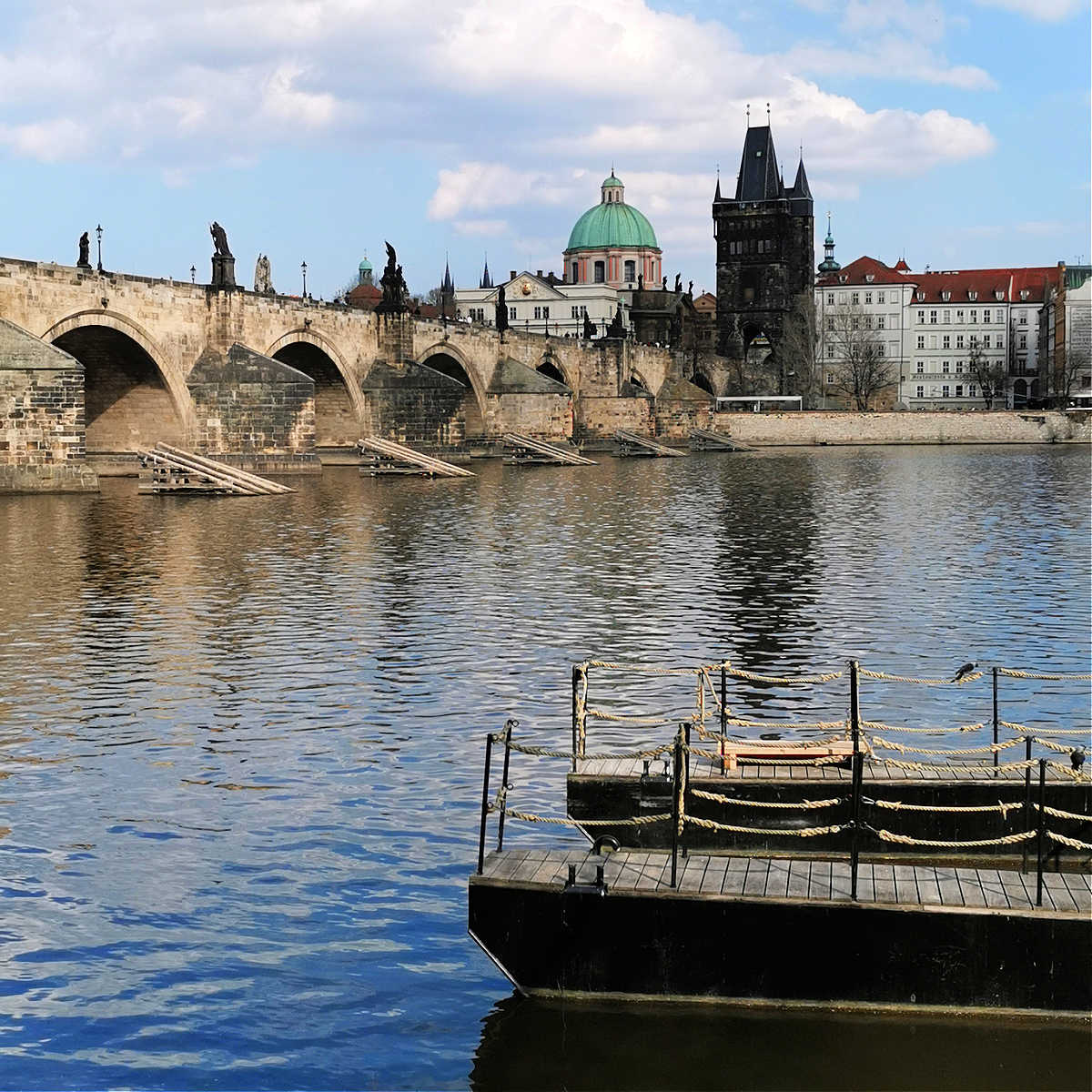
Where is Charles Bridge in Prague?
Charles Bridge is right in the centre of Prague connecting the Old Town with the Lesser Town. It’s well signposted from both sides and you can’t miss it.
Is Charles Bridge worth visiting?
Yes, absolutely! Charles Bridge is definitely worth visiting since it’s the oldest standing bridge in Prague and the second oldest standing bridge in Czech Republic (the first one is in Pisek). You can get some amazing photos of Prague Castle from there and of course of the bridge and the bridge towers too.
Even if you are visiting Prague for one day, you should have enough time to walk from Prague Castle down to Charles Bridge and then continue onto the Old Town Square and it’s a great way to see Prague on the foot.
Saying that if you don’t like crowded places, you might like to plan your visit to Charles Bridge for a very early morning or late at night.
I can never get tired walking across the Charles Bridge and one of my favourite moments was about 10 pm at night in January when it started to snow and the whole bridge was very quiet and you could see the snowflakes reflecting in the light as they were falling down.
Another time I had a photo taking lesson at the Charles Bridge, starting at 5 am to capture the sunrise and the whole bridge was empty (it was very early spring).
There were just a few other photographers deciding where to take the best photo and when the sun started to come out, it was a very special moment to share with the rest of the people on the bridge.
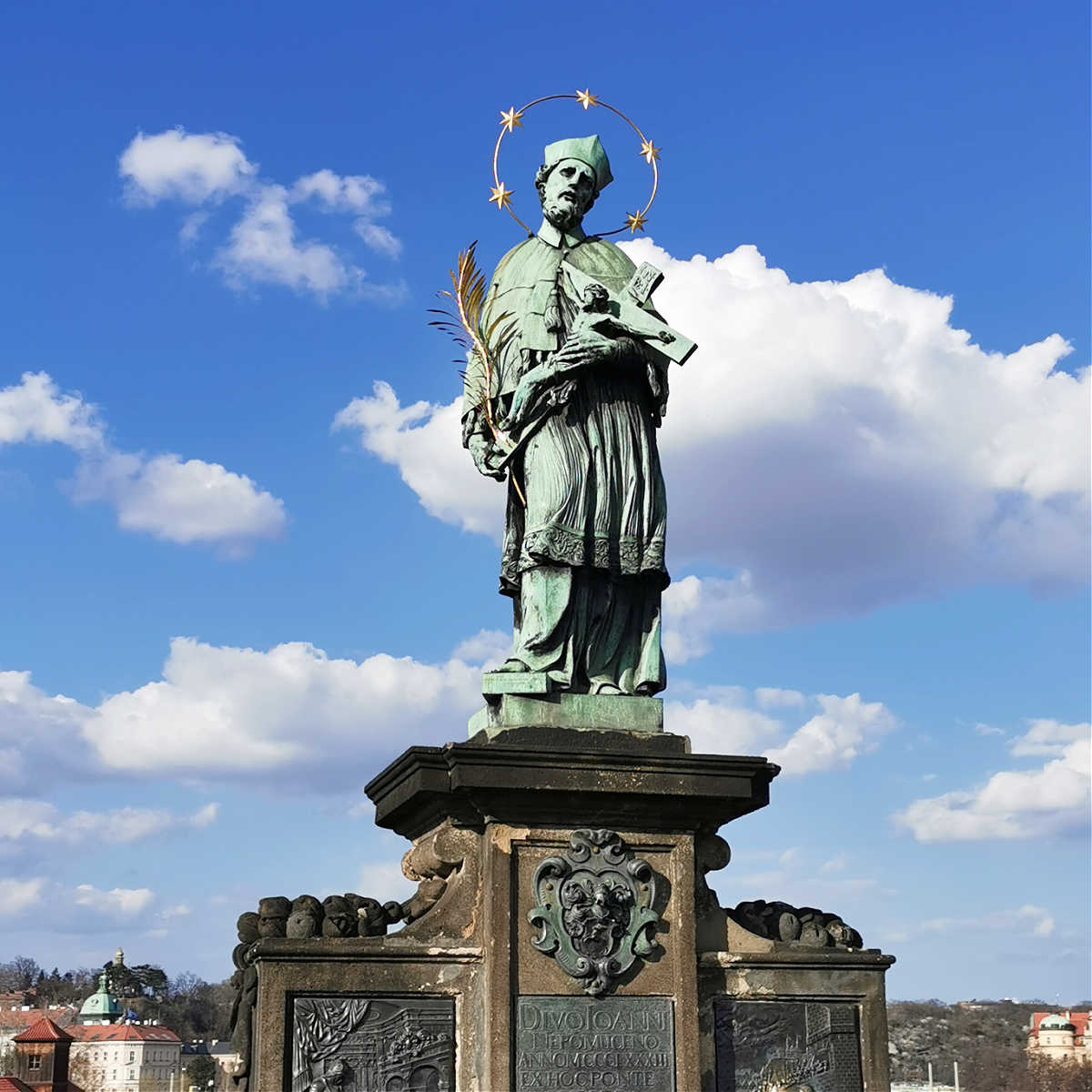
Make sure you don’t miss the Statue of St John of Nepomuk
This is the first statue placed on the bridge in 1683. It’s standing on the site where St John of Nepomuk was thrown into the Vltava River after he was tortured by King Wenceslas IV (the statue is roughly in the middle of the bridge).
There are several variations of the reason as to why St John of Nepomuk was tortured, the most popular (and probably not the correct one) is that Nepomuk wouldn’t say to the King what his wife – the queen – had told him during her confession.
The more plausible reason is that Nepomuk was tortured because he didn’t agree with the choice of the King’s new abbot to the Kladruby Abbey and instead chose his own person to run the Abbey.
If you touch the statue, it’s said to bring good luck to you and also that you’ll return to Prague in the future.
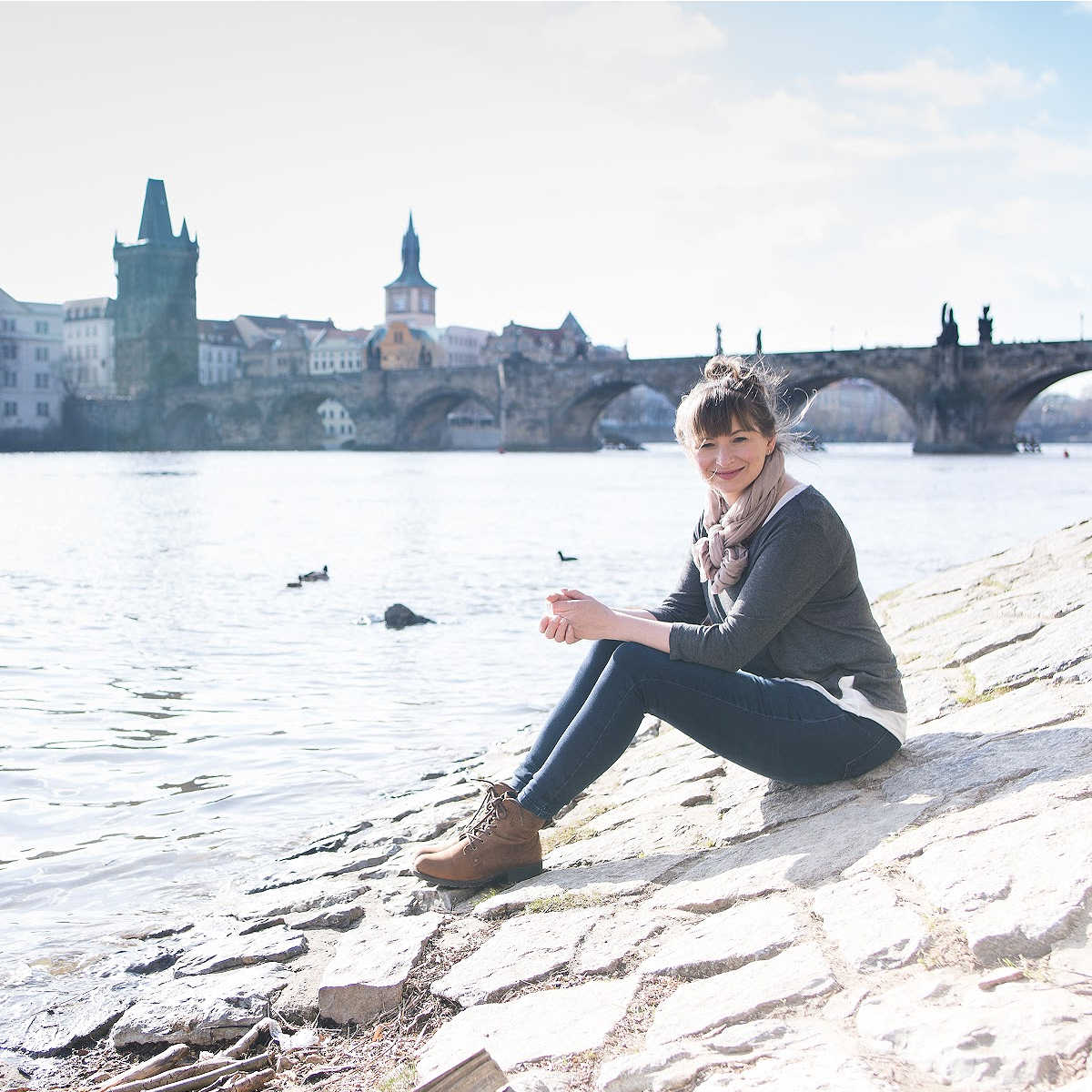
Why is the Bridge called ‘Charles Bridge’ ?
Originally the bridge didn’t have an official name and it was simply referred to as ‘town or city bridge, ‘stone’ bridge or ‘Prague’ bridge.
The bridge became ‘Charles Bridge’ much later on after Charles IV died, and it was in honour of him. Until 1841 Charles Bridge was the only bridge over the Vltava River, so there was no need to distinguish the bridge by name. Once new Prague bridges were being built, the name ‘Charles Bridge’ was adopted as the official one.
The legend of how Charles Bridge was built
There is a famous legend that claims that Charles Bridge was built with raw eggs and wine that were added to the mortar to strengthen it.
People from all over Bohemia were coming in and helping with building the bridge and sending eggs in.
People from one village a fair distance outside Prague were worried that their eggs would break on the way to Prague as they were travelling in their wooden carts on bumpy roads. So instead of bringing fresh eggs, they decided to hard-boil the eggs!
Their effort was met with laughter when they arrived at the bridge-building site because the hard-boiled eggs couldn’t be mixed into the mortar. Instead of that, the builders and other workers ate them for their lunch!
As much as I love this story, it’s unfortunately not true. A recent archaeological study (2007) confirmed that no animal products were used for building the bridge.
The beginnings of Charles Bridge History
Charles Bridge was built over a period of nearly 50 years from 1357 to 1402 by architect Peter Parler, who also built the St. Vitus Cathedral at Prague Castle and the Church of Our Lady Before Tyn next to the Old Town Square in Prague.
The new bridge was going to replace an old bridge, called the Judith Bridge, which was unfortunately destroyed during high floods in 1342 and couldn’t be repaired.
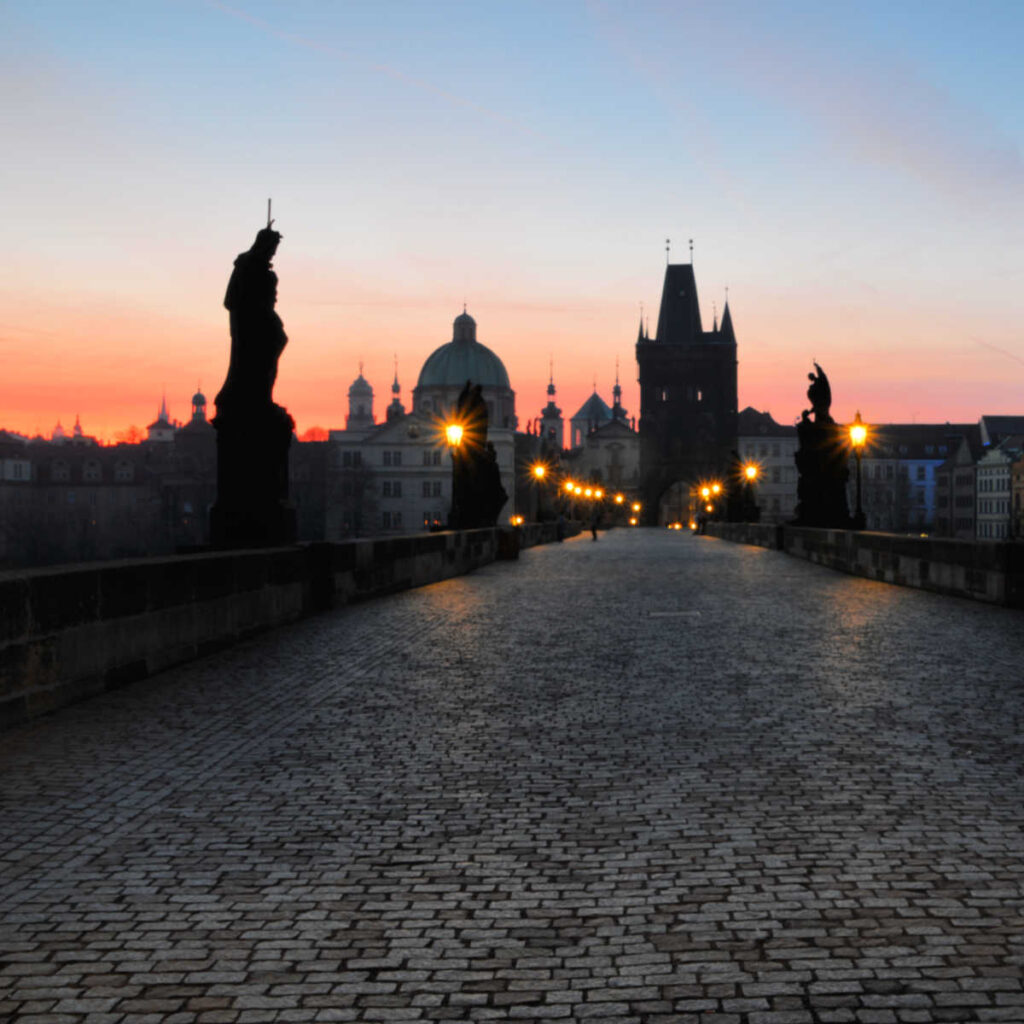
What’s the best time to visit Charles Bridge?
Charles Bridge is open 24 hours a day, every day of the year, and there are no barriers or restrictions, which means that you can visit Charles Bridge any time you like.
The bridge becomes the busiest from mid-morning to mid-afternoon most of the week, and the busiest times are at the weekend (Saturday, Sunday or during national holidays when people have a day off).
If you want to see the bridge without people (or as few people as possible), it’s best to get up super early and walk across the bridge before sunrise. This is around 7-8 am in the winter and 5-6 in the summer.
Even as early as this, you will still see people around – mainly professional photographers, or tourists wanting to get the best photo of Charles Bridge.
There are also considerably less people around after 5 pm in the winter or about 7 pm in the summer when the organised day tours leave Prague and only tourists that are staying overnight in Prague might be around.
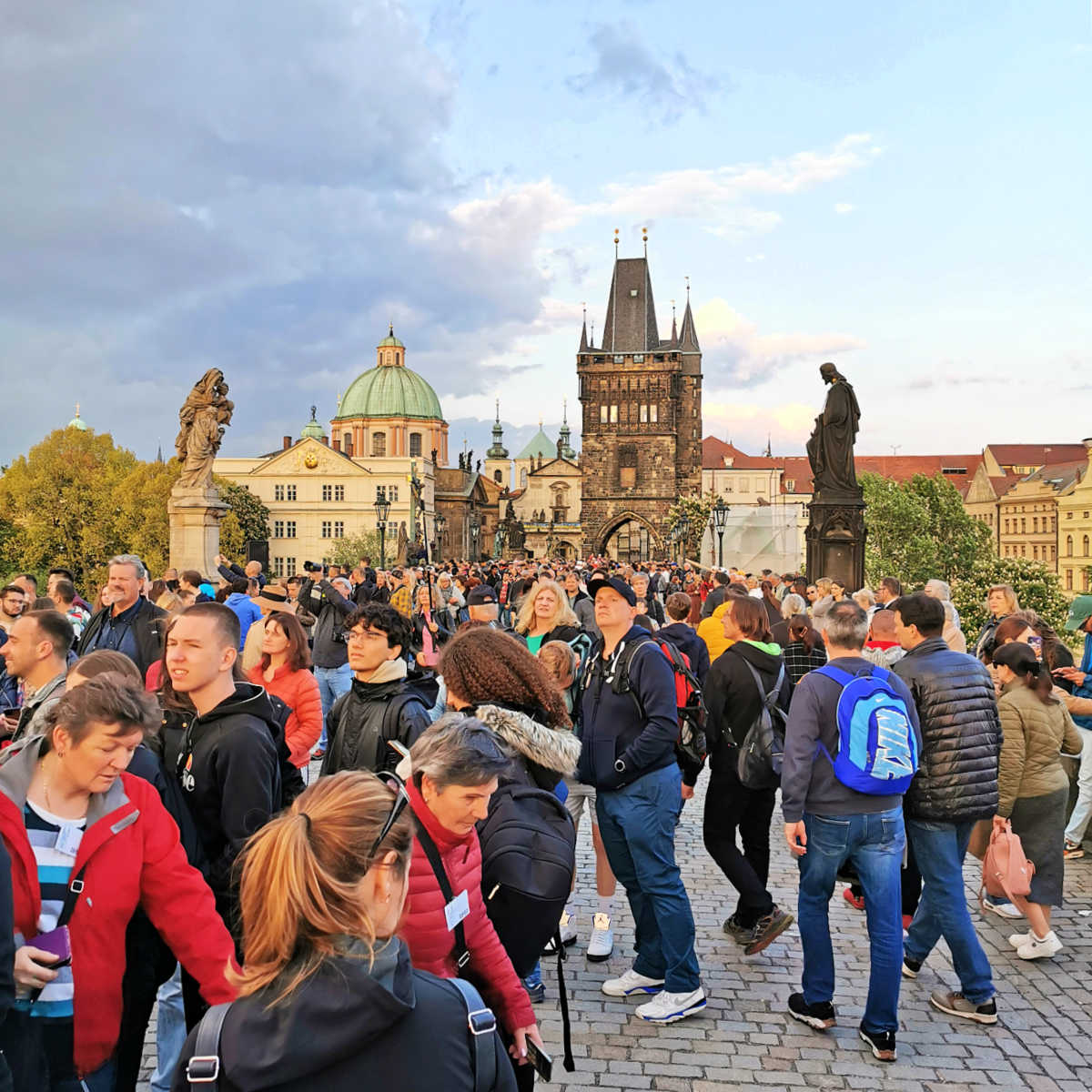
Is Charles Bridge pedestrianised?
Charles Bridge is a pedestrian zone only, and cars, bikes or any other types of vehicles are not allowed on the bridge. The only car you do sometimes see on the bridge is a small bin men’s truck!
But it wasn’t always like that, and at one point, the bridge had two tram lines in the middle, narrow walkways on both sides and cars were also permitted to drive across. All this traffic had to fit into the 9.5 metres wide bridge!
When Charles IV was giving instructions to build the bridge, he wanted to make sure that at least four carriages could safely fit next to each other on the bridge!
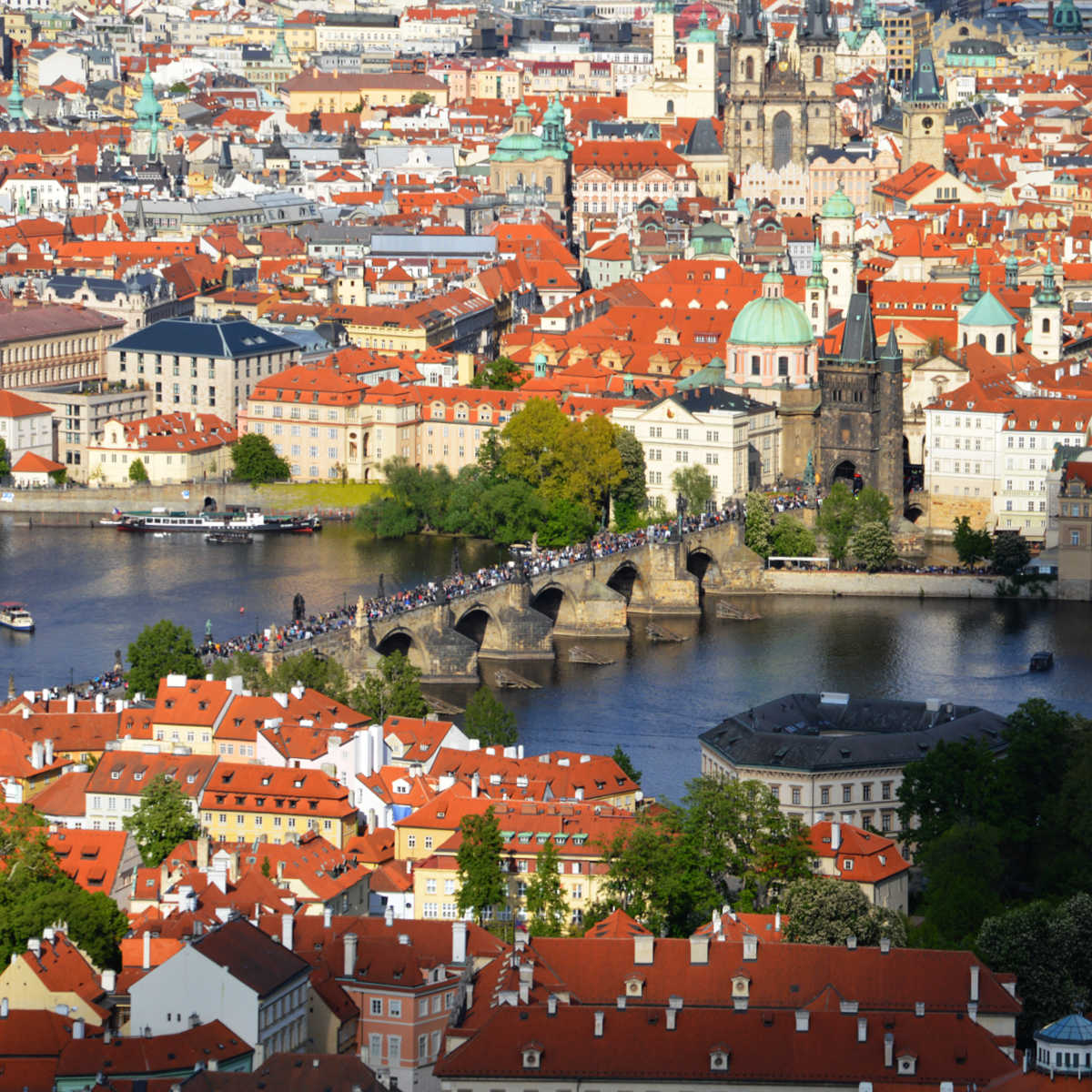
How long does it take to walk across Charles Bridge?
The bridge is just over 500 metres long, so if the bridge is not too busy, you can walk across it in about 10-15 minutes. But if you want to take some pictures, look at the statues in more detail and stop at the St. Nepomuk’s Statue, I would suggest allocating 30 minutes as a minimum.
If you want to visit either of the bridge towers, allow yourself a minimum of 60 minutes for each tower if you want to take some photos and read panels about the history.
Additionally, there is also a Charles Bridge Museum, which can take about another 60 minutes to visit.
If you fancy seeing the bridge from the river, you can also take the river boat tour (the one at Charles Bridge Museum) goes mainly on the river and the other boat company starts from Certovka (the little stream at Kampa Island) and takes you mainly through the Certovka stream and then a little bit on the Vltava river too.
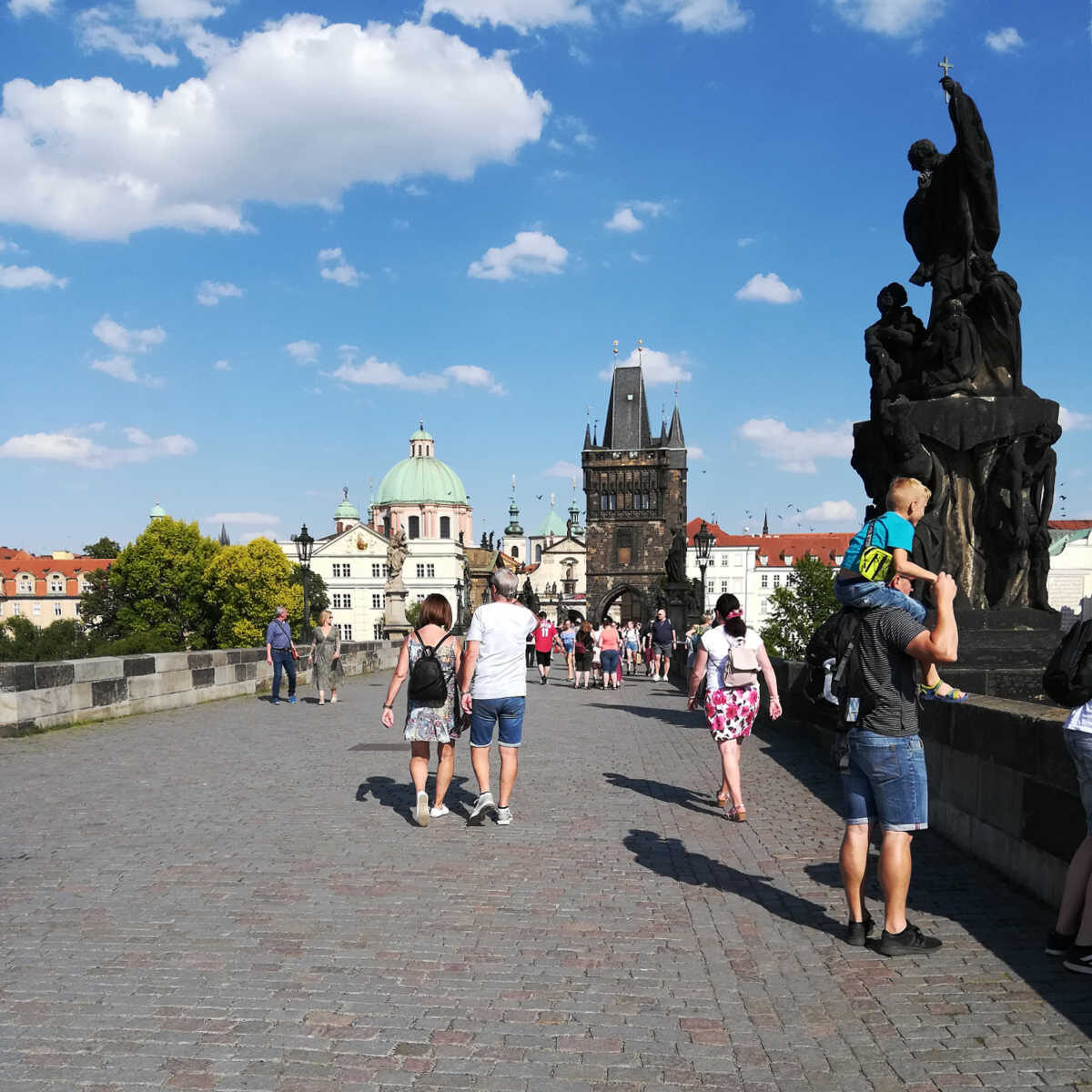
Is Charles Bridge free to enter?
Charles Bridge is free to enter, and you don’t need to book any tickets to walk over the bridge.
But in the past, this wasn’t always the case. There was a toll fee payable every time you wanted to cross the bridge and the fee depended on what goods you carried or animals you had with you or if you walked or drove in a carriage.
The toll was in place from the beginning until 1815, when the king decided that the crossing should be free for all.
Charles Bridge has been free to cross ever since and for nearly the next century (until 1925), this was a unique position amongst the other bridges in Prague – Charles Bridge was the only bridge in Prague where you could cross the river for free.
This was because other bridges across the Vltava were new, and tolls were being charged to fund their upkeep.
One local journalist and writer pointed out at the time that because nowadays Charles Bridge is free to cross it attracts all sorts of unsavoury people and that the noblemen and gentle women of Prague would rather pay to cross the river by a different bridge than mingle with all the poor people of Prague!
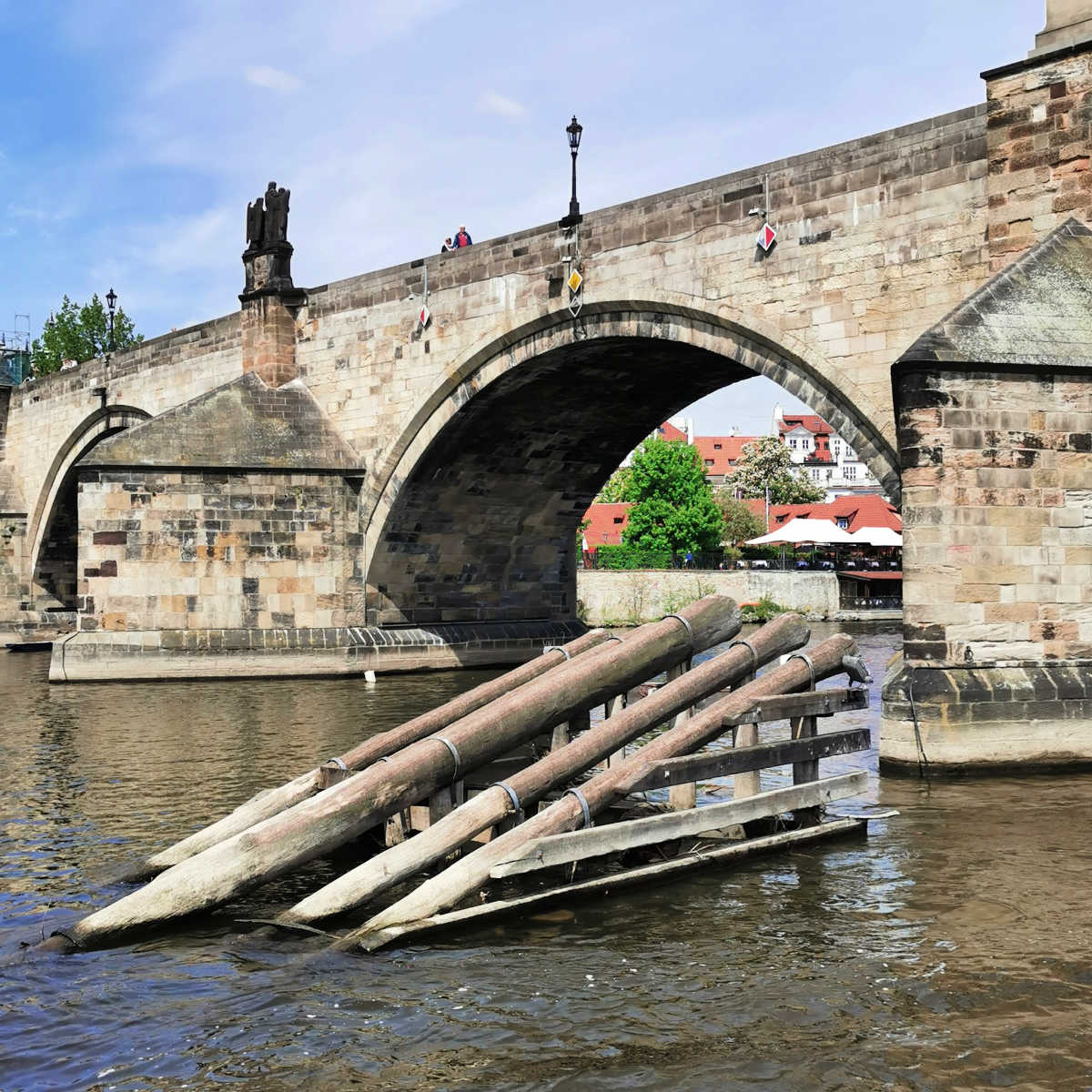
Charles Bridge Statues
There are over 75 different statues in about 30 different compositions on the Charles Bridge, but here are the few I find the most interesting.
Originally the bridge didn’t have any statues until 1683 when the first one (St.John of Nepomuk) was placed on the bridge as a way to reinforce Catholicism faith in Bohemia.
The statues, which are already replicas of the originals, are being gradually repaired and cleaned so the ones that are lighter in colour are newly restored.
Over the years, the statues become darker with pollution and smoke from chimneys, which made them dark in colour. I have to say, that I only know them being dark and moody in colour, so seeing them clean and like new takes a bit of getting used to.
- St. John of Nepomuk: This is one of the most recognizable statues on the bridge, depicting the saint holding a cross. It is said to have special powers that protect the city from floods. St John of Nepomuk statue is the first one to be placed on the bridge in 1683.
- St. Luthgard: This statue depicts the saint with a crown of thorns and a crucifix, and is one of the oldest statues on the bridge.
- St. Francis Xavier: This statue depicts the saint holding a crucifix and a book, and is one of the most detailed statues on the bridge.
- St. Joseph: This statue depicts the saint with the baby Jesus and is located at the end of the bridge on the Lesser Town side.
- St. Vincent Ferrer: This statue depicts the saint with a coffin and a kneeling penitent sinner by his legs.
- St. Procopius of Sázava: This statue stands on a devil to the right of St. Vincent Ferrer.
- Bruncvik: This statue is easily missed because it’s below the bridge standing on one of the pillars supporting the bridge. This statue is of a legendary knight named Bruncvík. According to the legend, Bruncvík set out on a quest to find a magical sword that would help him defeat a dragon terrorizing his kingdom. He travelled to different lands and defeated various mythical creatures, including a lion, a dragon, and a unicorn. Finally, he came to a castle where he found the sword and used it to slay the dragon. The statue of Bruncvík on Charles Bridge was created by sculptor Ludvík Šimek in 1884 and you can see Bruncvík holding a sword in his hand with a lion at his feet. The statue has become a popular tourist attraction and is often photographed by visitors to Prague, because it’s below the bridge, so it’s a bit different (and as far as I know, Bruncvik is not a saint, which many of the other statues are). The Bruncvik statue is also mentioned a lot in Czech quizzes as ‘name one statue that’s not on the top of Charles Bridge’.
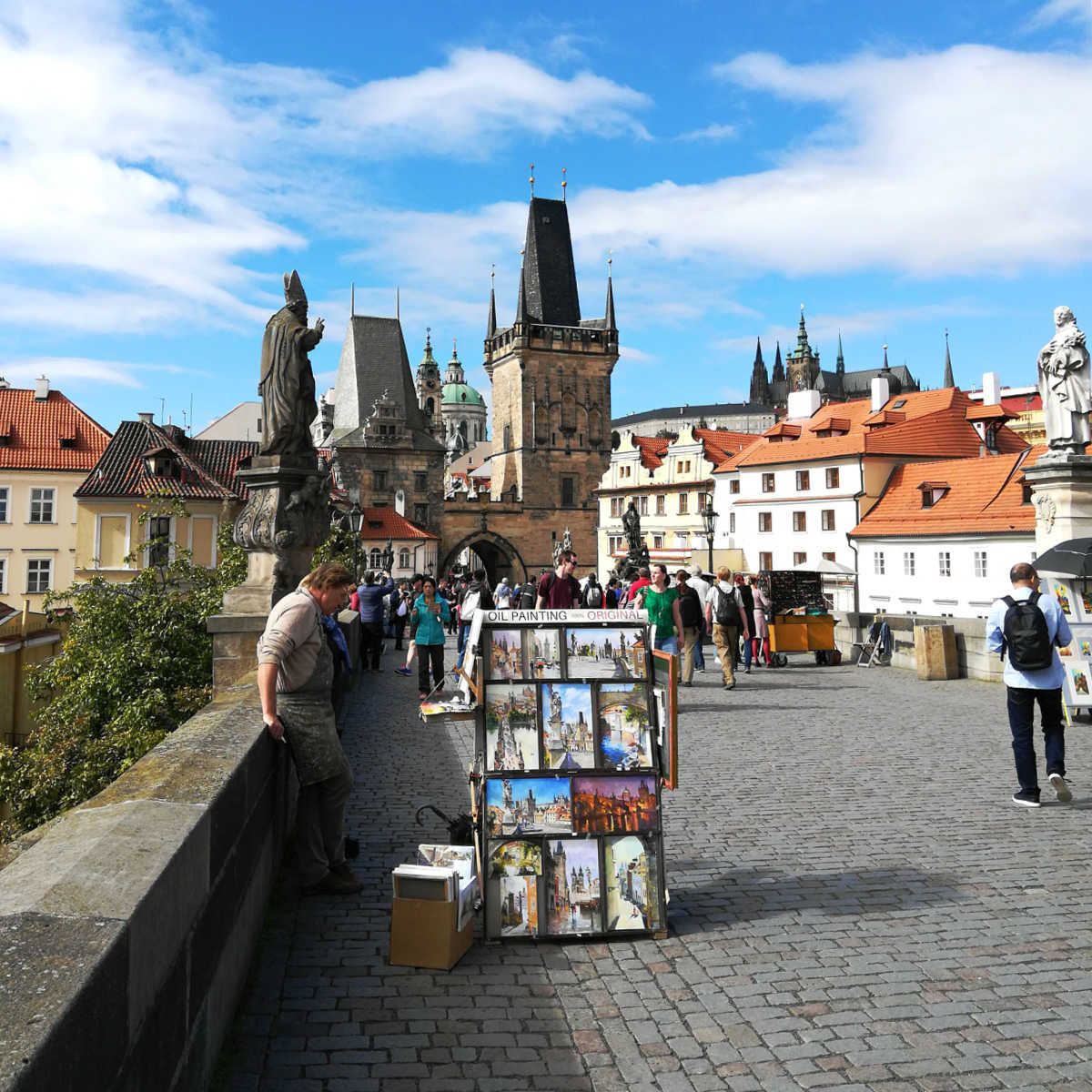
Charles Bridge Towers
There are two lookout towers on each side of the Charles Bridge and you can climb the stairs to view Charles Bridge, Old Town and Prague Castle.
There are also exhibitions about the history of the towers and Charles Bridge and some of their gruesome history such as displaying the heads of 21 knight rebels who were rallying against the Habsburgs in 1621 after the battle of the White Mountain in 1620 ( you can see the battle re-enactment every year if you visit Prague in September).
The entrance fee is 190 CZK and the towers are open from 10 am – 7 pm (and sometimes until 11 pm in the summer).
Old Town Bridge Tower – on the side close to the Old Town Square
This tower is best to visit in the morning if you want to take good photos of the side with Prague Castle as you get the sun shining on Prague Castle. You will need to climb the 138 steps, but the views are well worth it.
This tower was built as the entrance to the bridge and was built during the time the bridge was built around 1370.
Lesser Town Bridge Tower – on the side close to the Lesser Town Square
If you visit in the afternoon or evening, you will get a beautifully lit Charles Bridge with the Old Town Tower on the other side. The sunset is particularly beautiful to watch there.
This tower is only 45 metres high and it’s much lower than the Old Town Tower. The viewing area is about half-way up the tower and because the tower is connected with what used to be the Judith Tower, it’s the much safer tower to go up to if anyone has difficulty with heights.
Charles Bridge in film
Over the years, Charles Bridge has been featured in many Czech and international movies. You might recognise the bridge from Mission Impossible (1995) or Spiderman – Away from Home and many more.

Special Events at Charles Bridge
There are many events that take place on or around the Charles Bridge during the year.
For example, Navalis is a celebration of St. John of Nepomuk who was a Czech saint who drowned in Vltava after he was tortured and thrown off the Charles Bridge (you can see the exact spot marked with a shrine, and his statue is in the middle of the bridge).
The main Navalis celebrations take place each year on the 15 May and usually, there are also accompanying events a few days before the 15 of May.
On the day, there is a mass in the St.Vitus Cathedral at Prague Castle and afterwards, the procession walks down through Nerudova Street to the Bridge. There is another mass at the St. Francis Of Assisi Church on the Old Town side of the Charles Bridge.
Afterwards, there is a classical concert performed on a specially made platform floating on the Vltava river, together with colourful boats, gondolas and lights. You can join the procession or mass if you like or listen to the concert from the Charles Bridge, Manes Bridge or the opposite side of the river close to the Franz Kafka Museum.
Art & Local crafts stalls
Every day you will find different art or craft stalls selling locally made crafts, earrings and paintings. You can also have your portrait painted by the talented artists. There used to be a lot more stalls, but over the years the numbers have been deliberately decreased to allow for people to pass on the bridge.
There are no food or drink shops or stalls on the bridge, but you will find fast food shops on each side of the bridge as you walk towards the bridge.
You might also hear live music on the bridge – often, it’s a jazz band or classical music.
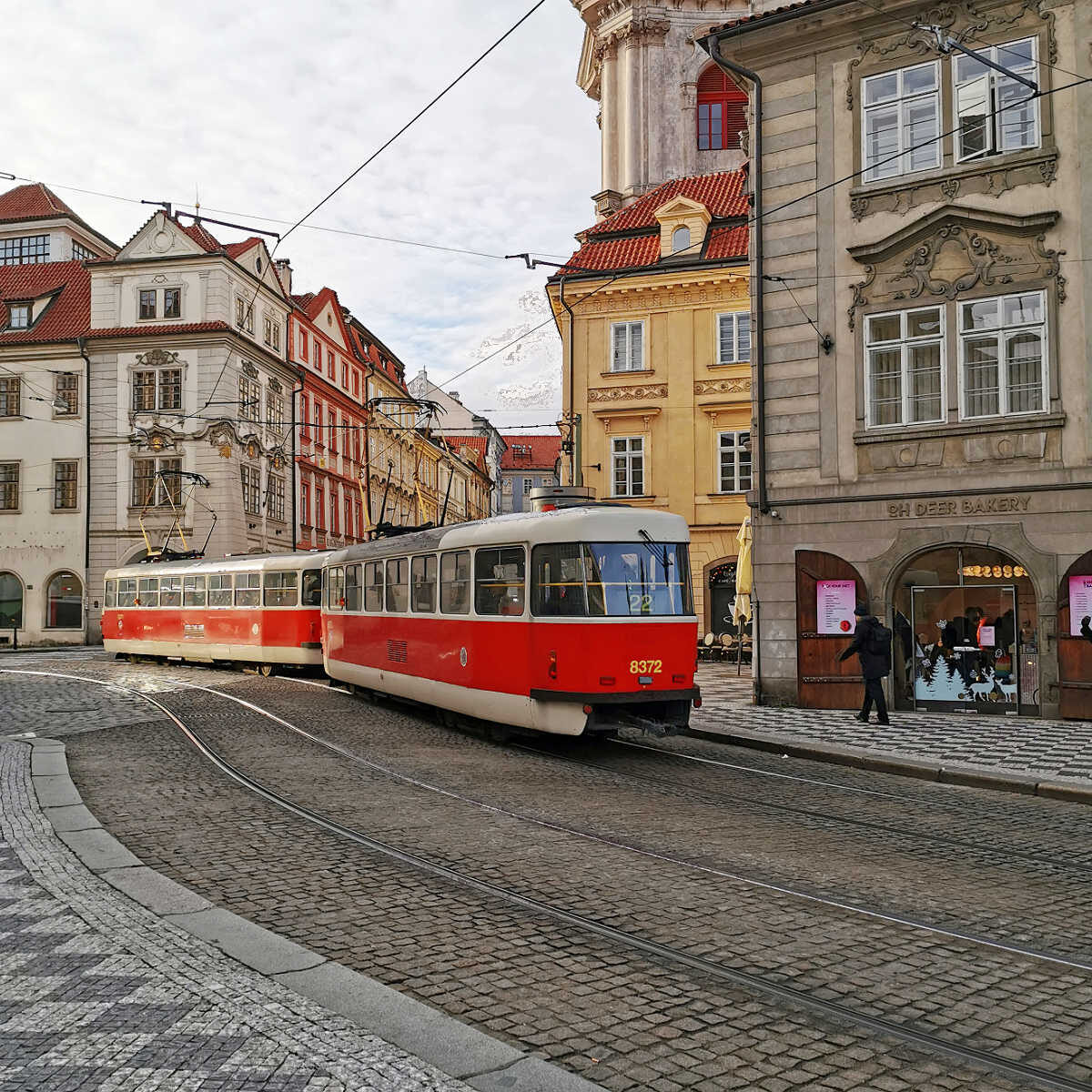
How to get to Charles Bridge
My favourite way to get to Charles Bridge is to get the tram to the Lesser Town Square (Malostranske Namesti) and walk to the bridge (2 minute’s walk). You can get number 22 tram, 15 or 20 tram.
If you prefer to use the Prague underground, you can get off at Malostranska and walk towards the bridge through the cobbled stoned streets (about 15 minutes).
On the Old Town side of the Charles Bridge, the nearest tram stop is Staromestska (or Karlovy Lazne) on the 1,2 17, 18, 25 tram line or you can get off the Staromestska Metro Station.
Another favourite way to get to Charles Bridge (although it can get very crowded and busy) is to follow the King’s Route Street from Old Town Square. This route is lined with tourist souvenir shops, restaurants and fast food places.
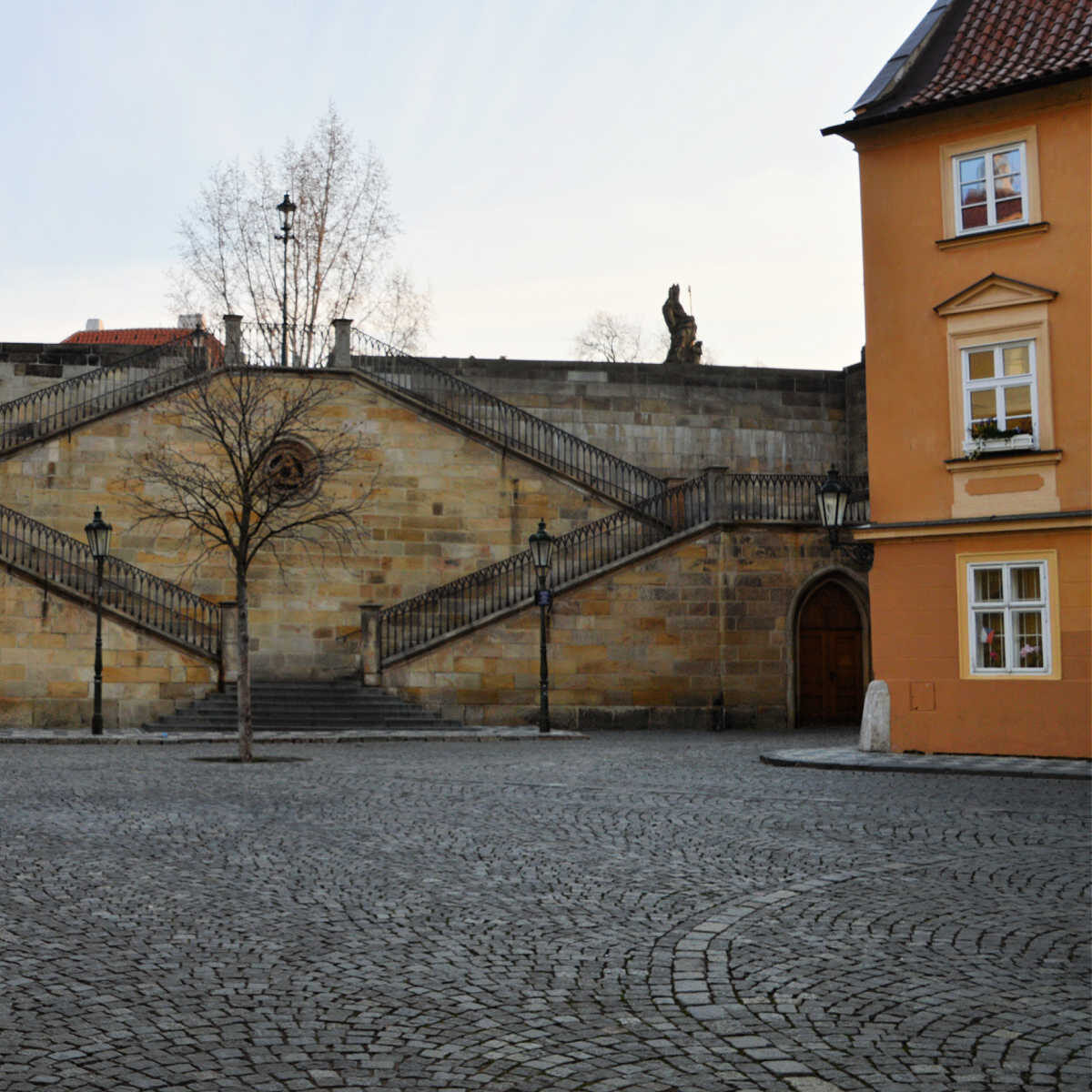
What other popular tourist attractions can you see near Charles Bridge?
Charles Bridge Museum – this museum is next to the Old Town Tower and you can buy a combined ticket to the museum and the short river boat trip starting from under the square (where you can also see the old foundation stones of Judith’s Bridge, that stud there before Charles Bridge was built.
Karel Zeman Museum – This is a super cool museum that celebrates the life and work of Karel Zeman, a Czech filmmaker and special effects artist. The museum is set up to look like a film studio with small stages, and I really like how you can explore the world of fantasy and adventure that Zeman created through his films.
You can also find the original restored film sets, original props, and costumes from Zeman’s films. Even if you don’t know anything about Karel Zeman (and you probably won’t…), this museum is a great place for film lovers and anyone interested in the art of special effects and animation. Terry Gilliam, who you may know from Monty Python, is a big fan of Zeman’s animation.
Kampa Island – towards the end of the bridge (walking towards the Lesser Town Tower) you will see steps leading down to a sort of square with trees. If you come down you can walk to the Lennon Wall and also explore the Kampa Island and the park. You will also find restaurants, cafes and art galleries there.
This blog post was originally written on 17 May 2023 and last updated on 17 May 2023
PIN TO KEEP FOR LATER

